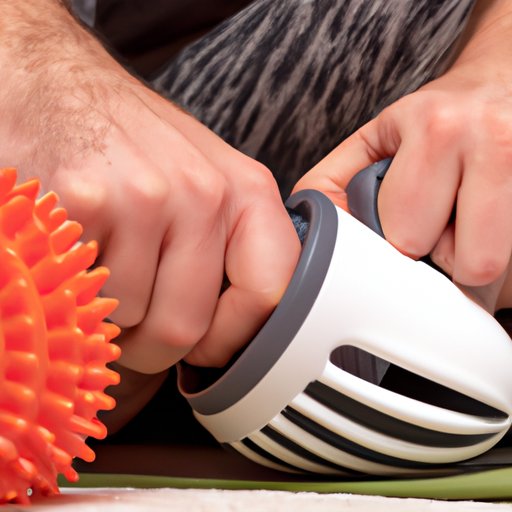
Introduction
Have you ever felt a sharp twinge or ache in your muscle? Chances are you may have pulled a muscle. Muscle pulls are a common injury that can happen to anyone, regardless of age or fitness level. In this article, we will explore what happens when you pull a muscle, the different types and causes, how to treat and prevent them, and effective exercises for recovery.
Pulled Muscles: Understanding the Pain and Science Behind It
A pulled muscle, also known as a muscle strain, occurs when the muscle fibers are torn or stretched beyond their limit. The common symptoms of a pulled muscle are pain, swelling, stiffness, and restricted movement. During a muscle pull, the muscle fibers tear in response to sudden stretching or overexertion. This causes inflammation and swelling, which leads to pain and discomfort. The severity of a pulled muscle can range from minor discomfort to extreme pain and limited functionality.
From Minor to Major: The Different Types and Causes of Pulled Muscles
There are three types of muscle pulls (grades I, II, and III) that vary in severity. Grade I pulled muscles involve minor tears in the muscle fibers, while grades II and III are more severe and involve significant muscle fiber damage. Common causes of muscle pulls include exercising without proper warm-up or stretching, sports injuries, and accidents. Other risk factors that can increase the likelihood of experiencing a muscle pull include age, prior strain or injury, and poor conditioning.
Pulled Muscles vs Strains: What’s the Difference and How to Tell Them Apart
Although often used interchangeably, there is a difference between muscle pulls and strains. Muscle pulls refer to the tearing or stretching of muscle fibers, while strains refer to damage to the tendons or muscles themselves. The signs and symptoms of muscle pulls and strains can be similar, but there are specific differences in how they occur, the location of pain, and the types of movements that aggravate them. It is important to distinguish between the two to properly treat and prevent further injury.
What You Need to Know: How to Treat and Prevent Pulled Muscles
When treating a pulled muscle, the goal is to reduce pain and inflammation while allowing the muscle to heal. This typically involves the RICE method (rest, ice, compression, elevation), over-the-counter pain medication, and gentle stretching and exercises. To prevent pulled muscles from occurring before you exercise, start with a warm-up to get your muscles moving and increase circulation. Incorporating stretching into your routine can help your muscles stay limber and flexible. Additionally, proper form and technique during exercise can prevent overexertion and excessive strain to your muscles.
Pulled a Muscle? Here’s What You Should Do and Avoid Doing
If you experience a pulled muscle, it is essential to properly care for the injury to prevent further damage. This includes immediately stopping the activity that caused the injury, using the RICE method, and taking over-the-counter pain medication if needed. Be careful not to over-treat the injury or return to physical activity too soon. This can delay the healing process and increase the risk of re-injury. If the pain persists or limits your mobility, seek professional medical attention.
The Road to Recovery: Effective Treatments and Exercises for Pulled Muscles
The recovery process for a pulled muscle involves gradually increasing mobility and strength in the affected area. This may involve physical therapy, massage, or other treatments to aid in recovery. Gentle stretching and exercises can help promote blood flow to the muscle and prevent further injury. Effective exercises for recovery include low-impact activities such as swimming, yoga, and Pilates. It is important to slowly increase exercise intensity and duration to avoid re-injury.
Avoiding Common Mistakes: Tips to Prevent Pulled Muscles During Exercise and Daily Activities
Pulled muscles can be avoided with proper precautions and attention to good exercise form. Some tips to prevent pulled muscles during exercise and daily activities include warming up and stretching before physical activity, using proper form and technique, staying hydrated, and avoiding overexertion or overuse of muscles. Additionally, incorporating strength training exercises can help build muscle mass and prevent future injury.
Conclusion
Pulled muscles can be a painful and limiting injury that can occur to anyone, regardless of age or fitness level. Understanding the causes, symptoms, and treatments of muscle pulls can help you minimize your risk of this injury while promoting proper recovery time. Remember to always listen to your body and take care when engaging in physical activity to prevent pulled muscles from occurring in the first place.





